This month we provide an update on the Hôpital de la Miséricorde and analyze controversial plans by Hydro-Québec to integrate an electricity substation into the haunted site. The ghost-ridden Hôpital de la Miséricorde has been empty for years and is starting to crumble. Located on prime real estate in Downtown Montreal...
Welcome to the thirtieth edition of the Haunted Montreal Blog! Released on the 13th of every month, the October 2017 edition focuses on research we are carrying out into Harry Houdini’s fateful connection to Montreal, his untimely death and reports that his ghost returns to haunt the city. We are also excited to share our extensive plans for the 2017 Hallowe’en Season! Working in collaboration with the City of Montreal’s 375th Anniversary Team, Haunted Montreal is offering all three of its ghost tours in both languages for the first time ever! Haunted Montreal is also assisting organizers with La Trouble-Fête, a three day Hallowe’en Festival at the Place des Arts that runs from October 27 – 29!
To receive a new Montreal ghost story on the 13th of every month, please sign up to our mailing list on the right of the screen (or below on mobile devices).
HAUNTED RESEARCH
Harry Houdini, once known as the world’s greatest magician, was a man of great mystery. His connection to the City of Montreal is both strong and extremely tragic. Houdini met his fate in Montreal while touring a magic show at the Princess Theatre on the afternoon of October 22, 1926.

Following an incident with a student from McGill University in his dressing room, Houdini’s health began to fail. While he attempted to continue touring, he died just over a week later in a Detroit hospital – on Hallowe’en, no less! Today, rumours swirl that Harry Houdini’s ghost haunts various locations throughout North America, including Montreal!
Harry Houdini was born on March 24, 1874, in Budapest, Hungary. His parents, a Jewish rabbi and his wife, named him named Erich Weisz. While still a child, his family moved to Appleton, Wisconsin and he spent much of his childhood there. When he was 13, the family moved to New York City and young Erich became interested in trapeze arts – and magic.
In 1894, Erich renamed himself Harry Houdini (in homage of the great French magician Jean Eugène Robert-Houdin) and launched his career as a professional magician. Though his magic met with little success at first, his feats of escape using handcuffs drew lots of attention.
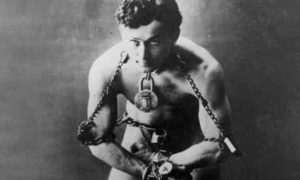
His assistant, Wilhelmina Beatrice Rahner, fell in love with him and they married. Her stage named was Beatrice “Bess” Houdini.
In 1899, Houdini’s act caught the attention of entertainment manager Martin Beck, who booked him at some of the best vaudeville venues in the United States. On the heels of success, a European tour followed. Houdini’s feats often involved the local police force, who would strip search him, place him in shackles and lock him in their jail cells. Every time, he was able to escape. Harry Houdini’s show became a huge sensation, and he soon became the highest-paid performer on the American vaudeville circuit.
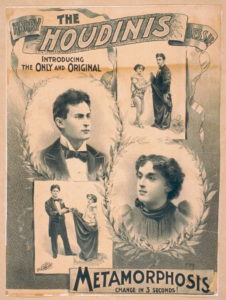
Houdini continued touring his magic show in the United States in the early 1900s, constantly pushing boundaries with his feats. He escaped from handcuffs, straightjackets, locked tanks filled with water and packing crates with nails hammered through them. Once, he even spent 91 minutes in a galvanized iron coffin that was submerged at the bottom of a hotel swimming pool. Using his uncanny strength and his equally impressive ability to pick locks, he escaped dangerous situations time and time again.
His most famous act, the hallmark of his career, was unveiled in 1912 – the Chinese Water Torture Cell. The performance involved Houdini, suspended by his feet, being lowered upside-down into a locked glass cabinet filled with water. In this aquarium-like contraption, Houdini had to hold his breath for more than three minutes in order to escape.

The performance was considered so daring and was such a crowd-pleaser that it remained a staple in his act until his death in 1926.
As a great illusionist, Houdini was also involved in an impassioned debate that was unfolding at the time surrounding a practice known as Spiritualism. Spiritualism is the belief that the spirits of the dead have both the ability and the inclination to communicate with the living. Believers see the afterlife, or the “spirit world”, as a place where spirits are active and continue to evolve. Spiritualism was popular from the 1840s to the 1920s and was considered a part of Victorian subculture. It included mediums, specialist newspapers, pamphlets, treatises, and secret societies. Private and public séances included table rapping, table tipping, automatic writing, levitation, and other types of communication with spirits. Spiritualism was especially popular in English-speaking countries and drew followers mostly from the middle and upper classes.
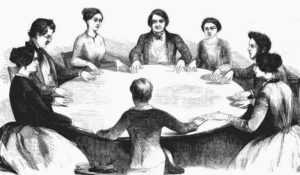
Some of the society’s most influential people practiced Spiritualism. Queen Victoria and Prince Albert participated in Spiritualist séances as early as 1846. Sir Arthur Conan Doyle, author of Sherlock Holmes, was an adherent and even Canadian Prime Minister William Lyon Mackenzie King communicated with spirits.
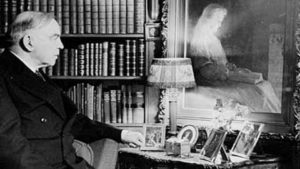
Harry Houdini, despite being the world’s most famous magician, was never a believer in Spiritualism, although he claimed he wanted to be. When his mother died in 1913, she left an impression on Houdini with her last word: “forgive”. He began to visit a number of mediums in an attempt to receive confirmation that his mother’s spirit existed in the after world. However, the more séances he attended, the more Houdini began to believe that all mediums were fraudulent and were taking advantage of vulnerable people. None of the mediums he visited were able to repeat his mother’s last word, and for him, this was enough evidence that the movement was a hoax.
Houdini decided to use his talents as an illusionist to expose the sneaky tricks used by unscrupulous mediums to take money from grieving clients.
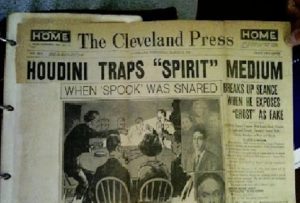
His mission to debunk such unethical quackery gained an impassioned, albeit small following.
Houdini’s position caused rifts within the Spiritualism movement and even ruptured friendships. His friend Sir Arthur Conan Doyle was convinced that Houdini possessed “divine” powers of dematerialisation, despite all of the magician’s protestations to the contrary.
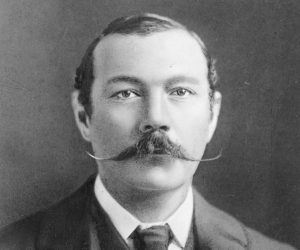
Their relationship began to sour when Houdini began to publicly debunk mediums, both on stage and in a journal called Scientific American.
Conan Doyle was devastated when Houdini exposed a Boston medium named Margery Crandon, an attractive blonde who was also known as the “Blonde Witch of Lime Street”. She would often perform naked and apparently secreted ectoplasm from her private parts. Houdini attended her show, observed her sleight-of-hand tricks, and then publicly exposed her as a fraud.
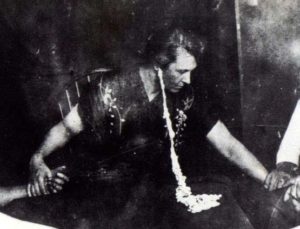
When Houdini announced to the séance attendees that the game was rigged, Margery and her spirit guide, Walter, were furious. “Houdini, you goddamned son of a bitch,” Walter yelled. “I put a curse on you now that will follow you every day for the rest of your short life.” This threat didn’t deter Houdini, and he took his exposé public, publishing pamphlets that described in detail exactly how Margery performed her “tricks”. Before long, Houdini didn’t just have Margery’s career in a death grip, he was strangling the entire Spiritualist movement. In August, 1926, Walter declared “Houdini will be dead within a year.”

Sir Arthur Conan Doyle interpreted Houdini’s mission to unmask mediums and debunk Spiritualism as a personal betrayal. Their friendship devolved into a feud and they made tit-for-tat comments against each other in various newspapers.
In spite of this conflict, Harry Houdini would continue touring his magic shows throughout North America, enjoying the fame and fortune that comes with being the world’s greatest magician. However, Walter’s curse and prediction would come to fruition in October in Montreal, where an unexpected incident would put an end to the storied magician’s career – and life.
On the afternoon of October 22, 1926, Houdini was relaxing in his dressing room at Montreal’s Princess Theatre on Sainte Catherine Street before an evening performance.

He was visited by two McGill university students who were curious about his alleged magical powers. One student named J. Gordon Whitehead asked Houdini if it was true that he could withstand any punch to the stomach, as the magician had previously proclaimed. Houdini said yes. All of a sudden, the young man delivered a series of four punches to Houdini’s gut before the magician could tighten his muscles.
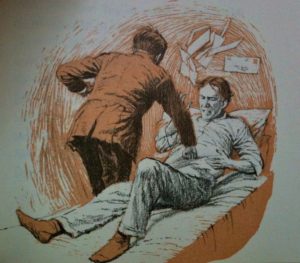
Taken off guard, Houdini’s appendix ruptured and his health quickly began to fail.
Throughout the evening, Houdini performed his show in excruciating pain. He was unable to sleep and remained in constant pain over the next two days as he travelled to Detroit to continue performing. When he finally sought medical help, Houdini was found to have acute appendicitis and a fever of 38 degrees. A doctor advised him to go to the hospital for immediate surgery, but Houdini decided to first complete his show, as planned, on October 24 at the tony Garrick Theatre.
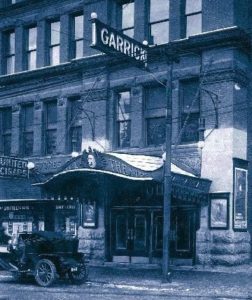
When the curtain rose, Houdini’s temperature was a feverish 40 degrees. Despite help from his assistants, he was clearly exhausted and in pain. Houdini missed several cues and seemed in a rush to complete the show. By the middle of the third act he could not continue so asked his assistant to lower the curtain. Houdini collapsed backstage and was carried by his assistants to his dressing room.
Stubbornly, he continued to refuse medical care until the next morning, when his wife Bess insisted he go to the hospital. Houdini relented and was admitted to Detroit’s Grace Central Hospital.
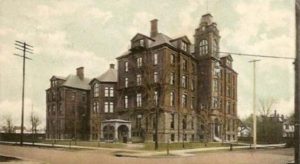
Doctors quickly removed his ruptured appendix. The doctors did not have much hope for his survival. Several days later, on October 31, Harry Houdini was surrounded by his wife and brother on his deathbed in room 401. Houdini promised his wife that he would send her a message from beyond the grave, if it was possible. With the last words “I’m tired of fighting,” Harry Houdini died at 1:26 pm of septic poisoning caused by peritonitis from a ruptured appendix, making for an extremely macabre Halloween.
Houdini’s funeral was held on November 4, 1926 in Queens, New York, at the Machpelah Cemetery. More than 2,000 mourners in attendance witnessed his burial. The crest of the Society of American Magicians was inscribed on his tombstone and a Broken Wand Ceremony was conducted.

The ritual is performed at the funeral of a magician and a wand is broken, signifying that with the magician’s demise, the wand has lost its magic. The Society of American Magicians continues to hold an annual Broken Wand Ceremony at Houdini’s grave to this very day.
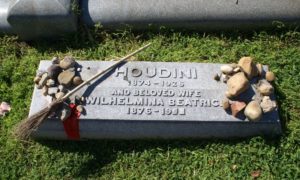
Houdini’s tragic and unexpected death on Hallowe’en and his promise to communicate from beyond the grave, even though he was a skeptic in life, raised a lot of eyebrows.
It didn’t take long for hundreds of mediums to emerge, each pronouncing that they had received messages from the late magician. Furthermore, the following year Bess organized a séance on Hallowe’en night in an attempt to bring forth his spirit.
It is a tradition that has continued into the present, with a séance being held somewhere in the world every Hallowe’en to try and communicate with Houdini’s ghost. In 2017, the séance is being held in Halifax, Nova Scotia.
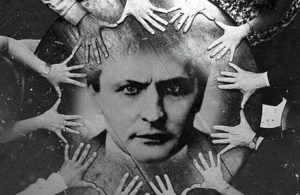
The contradictory nature of Houdini’s discourse about Spiritualism coupled his seemingly magical powers and the fact that he died on Hallowe’en have given rise to many, many theories about his ghost. While many skeptics don’t believe he ever became a ghost, others think he returned to haunt various locations around North America in a paranormal afterlife.
The first theory places Houdini’s ghost in Los Angeles. Ghost hunters Richard and Debbie Senate believe Houdini’s ghost haunts an old stone staircase at a ruined estate on Laurel Canyon Boulevard in Hollywood.
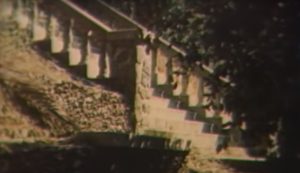
Known as the “Houdini Estate”, the mansion at 2400 Laurel Canyon Boulevard burned down in 1959. When and Los Angeles’s three big daily papers ran stories about the old Houdini mansion burning, visitors to the grounds began to report spotting Houdini’s ghost. They described phantom light orbs that could be seen darting through the trees on the hill behind the old mansion’s foundations.
Houdini had lived in Laurel Canyon in 1919 while making two films for Lasky-Famous Players and was known to swim in the spring-fed pool at the luxurious estate. Houdini had said that Hollywood was his favorite place and the nine months that he stayed there may have been the happiest time of his life.

Could his ghost have returned there, perhaps to reminisce about happier days?
The second theory places Houdini’s ghost in Niagara Falls, Canada. In the book Shadows of Niagara, John Savoie explains that “in 1968, atop Clifton Hill, The Houdini Magical Hall of Fame opened its doors featuring professional paraphernalia of the famous magician and escape artist. The large amount of treasures were bequeathed to Houdini’s brother, known in the profession as Hardeen.”
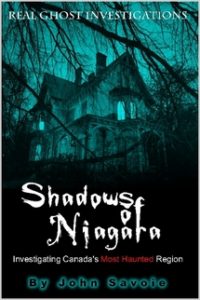
Houdini had instructed Hardeen to burn the material so that no one would discover his secrets, but Hardeen did not want to destroy the items. Instead, kept them in storage for nearly 40 years. Eventually, the hoard of items Houdini used during magic shows were sold to the Houdini Magical Hall of Fame in Niagara Falls and put on display.
According to Savoie: “In the first year of the museum’s operation, there were a series of six fires, a robbery and a freak accident in which one of the museum’s directors walked through a plate glass window. It appeared as if Houdini himself was showing his displeasure of the museum.”
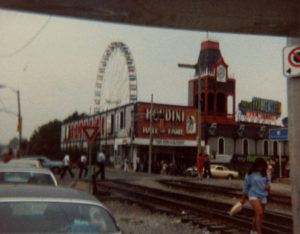
Savoie also mentions the numerous séances that were held each year to see if the spirit of Houdini would return: “Each time, the séances were less effective than previous years and finally in 1974, medium Ann Fisher, persuaded Houdini to make himself known and that this would be the last séance if he had not. Instantly, a pot of flowers fell to the ground and a book about Houdini followed. It opened to a page which featured a Houdini poster with the title, Do Spirits Return?”
In 1995, Houdini’s ghost was blamed for a massive fire that ripped through the building. Most of the artifacts were destroyed in the blaze, essentially fulfilling Houdini’s final wishes.
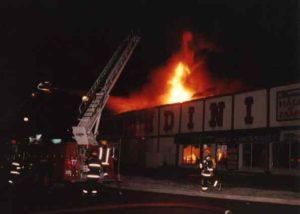
This building now houses a 3D Moving Theatre, and according to staff members, paranormal activities still unfold there, including disembodied voices that spook caretakers late at night. Could Houdini’s ghost haunt Niagara Falls, perhaps in anger that his last wishes were not respected?
The third theory suggests Houdini’s spirit remained in Detroit after his death. Some people believe his ghost haunts the David Stott Building, located on the same site of the Garrick Theatre, which was demolished in 1928. Other rumours place his ghost at the building that once housed Wm. R. Hamilton’s Funeral Home, where Houdini was embalmed. Still others feel it is more realistic that he haunts the site of the old Grace Central Hospital, which today hosts the Harper Professional Building. The hospital was, after all, the only place that Houdini was unable to escape from. Could Houdini’s ghost have returned to the site of his tragic death?
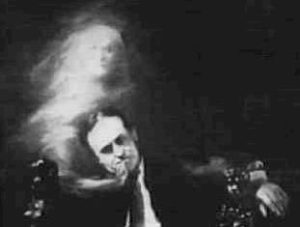
The fourth theory places Houdini’s ghost in Greenwich Village, New York. In the book Haunted Greenwich Village, author Tom Ogden speculates that Houdini haunts McSorely’s Old Ale House in Chapter 20, entitled “Escape from Beyond”. Founded by an Irish immigrant who had escaped the Famine, the tavern would go on to welcome some of America’s most famous people, including Abraham Lincoln, Teddy Roosevelt, e.e. cummings, Brendan Behan, Woody Guthrie and John Lennon. Houdini liked to frequent the establishment when in New York when between tours and Ogden believes his ghost haunts the watering-hole to this very day. The evidence? A pair of manacles that are rumoured to belong to Houdini are shackled to a gleaming bar rail.
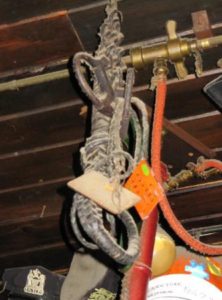
The theory suggests that Houdini’s ghost returns to his old watering hole in the form of a black phantom cat, sitting in the window, before suddenly disappearing. Could Houdini’s ghost have returned to his favourite pub?
The final theory places Houdini’s ghost in Montreal, the city where he met his fate. Montreal’s old Princess Theatre, where Houdini received the punches that ultimately killed him, is located at 476 St. Catherine Street West in a building that is presently abandoned. The Princess Theatre was built in 1908 for vaudeville and burlesque shows, operettas and theatrical performances.
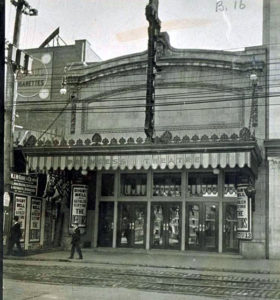
In 1915, it was completely destroyed by fire but was rebuilt two years later with a terracotta facade. It was in the second incarnation of the building that Houdini met his fate.
In 1963, the Princess was renamed Le Parisien, and underwent major renovations. In 1974, the theatre closed for more renovations and was later re-opened as a five-screen cinema. Le Parisien hosted the first Montreal World Film Festival in 1977, one of Canada’s oldest film events.
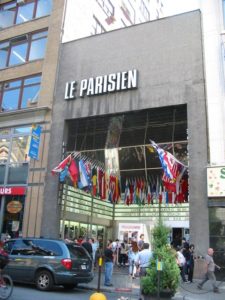
During its days as a cinema, there were wild rumours that Houdini was haunting the building. Staff members reported seeing his ghost on no less than three occasions, wearing a top hat and a cape.
In 2002, a fire destroyed one auditorium and damaged six others. Finally, the cinema closed its doors for good on April 12, 2007, after serving as a low-cost cinema showing French language movies. Could Houdini’s ghost have returned to haunt the site where he met his fate?
Today, the building is for rent, but with persistent rumours that Houdini’s ghost haunts the place, finding a tenant might be difficult.
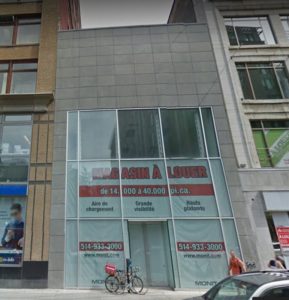
There can be no denying that Houdini still inspires artists and magicians to this very day. In popular culture, the stories of Harry Houdini’s spirit continue to influence creative people. In 2011, a Canadian band called Punch Drunk Cabaret wrote a song called “The Ghost of Harry Houdini“.
Meanwhile, Montreal’s McCord Museum has recently launched an exhibition featuring some of Houdini’s posters. It is entitled Illusions – The Art of Magic and will run through to January 7, 2018.
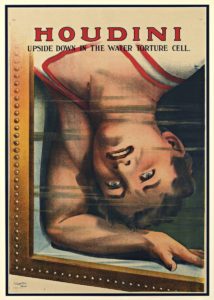
While ultimately it is still unknown if Houdini returned as a ghost, there are certainly a lot of theories about which city he haunts. Given that he was considered the greatest magician to ever live, perhaps he continues to appear and disappear at various locations throughout North America in a paranormal afterlife. If he is indeed a ghost, the odds seem good that he haunts Montreal, if only for the reason that it was here that he met his fate, the unexpected and fatal blows from a McGill student, that led to his ultimate demise.
COMPANY NEWS
For the Hallowe’en Season, running through October to Hallowe’en and beyond, Haunted Montreal is pleased to announce a gamut of activities! For the first time ever, we are offering all three of our ghost tours in both languages on many different nights. Check our website for more information and to buy tickets for Haunted Mountain (Mount Royal), Haunted Griffintown and Haunted Downtown ghost walks.
Haunted Montreal is also very proud to assist organizers for the city’s 375th anniversary with a three day Hallowe’en Festival at the Place des Arts. Entitled La Trouble-Fête, the spooky event runs from October 27 – 29!

We have also been busy helping establish a new company called Secret Montreal! The new enterprise has taken over the Haunted Red Light District Ghost Walk and also offers a brand new Montreal Burlesque Walking Tour that is being led by real burlesque queens!

The Haunted Red Light District Ghost Walk is being offered in both languages on Friday nights. For the Hallow’en Season, tours will run from Thursday, October 26 to Tuesday, October 31st.
Secret Montreal plans to develop other tours in the future that delve into the city’s fascinating past with a focus on hidden history.

For details on Secret Montreal and its walking tours, please visit the Secret Montreal website.
A big thank you to all of our clients who attended a Haunted Montreal ghost walk! If you enjoyed the experience, we encourage you to write a review on our Tripadvisor page, something that helps Haunted Montreal to market its tours. Furthermore, if you would like to receive the Haunted Montreal Blog on the 13th of every month, please sign up to our mailing list.
Lastly, Haunted Montreal wishes everyone a very happy Hallowe’en Season!
Coming up on Monday, November 13th: Paranormal Activity at the Hotel Bonaventure
Montreal’s Hotel Bonaventure is nestled on the top two floors of the 17-storey brutalist Place Bonaventure, the city’s original convention center. The 4-star hotel features 397 spacious rooms, including 5 luxurious suites, conference halls, the fancy Kube Restaurant and a heated rooftop pool. Described as “a true Garden of Eden overlooking the bustling streets of the city,” the hotel has also witnessed unexplained paranormal activity, including a well-documented UFO sighting on November 7, 1990! Tune in on November 13th to learn more about this mysterious hotel and its paranormal encounters!
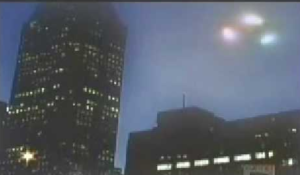
Donovan King is a historian, teacher, tour guide and professional actor. As the founder of Haunted Montreal, he combines his skills to create the best possible Montreal ghost stories, in both writing and theatrical performance. King holds a DEC (Professional Theatre Acting, John Abbot College), BFA (Drama-in-Education, Concordia), B.Ed (History and English Teaching, McGill), MFA (Theatre Studies, University of Calgary) and ACS (Montreal Tourist Guide, Institut de tourisme et d’hôtellerie du Québec).




Comments (0)